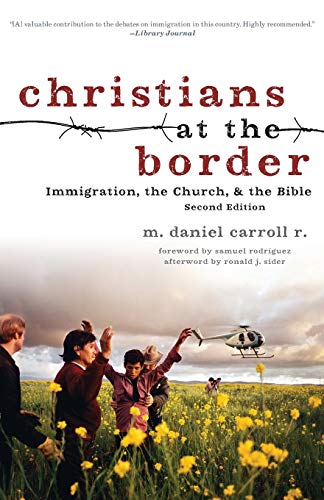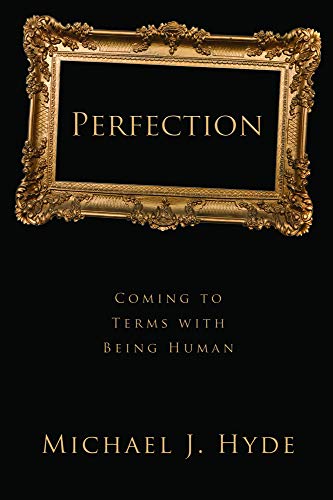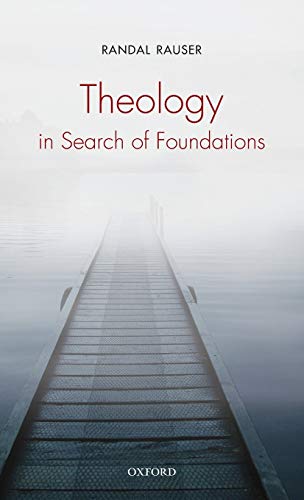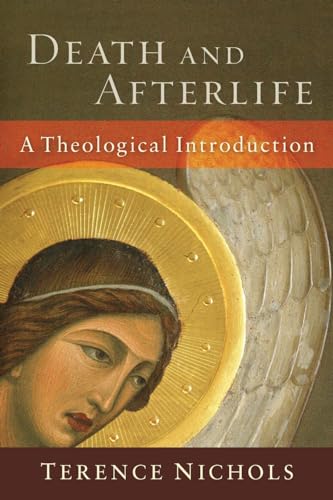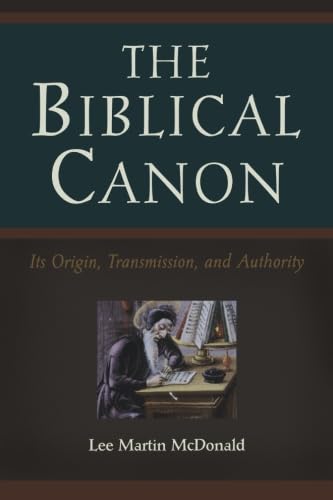Christians at the Border: Immigration, the Church and the Bible
Written by M. Daniel Carroll R. Reviewed By Sadrac E. MezaThese two books have many things in common besides the issue. Both authors are OT scholars; both are evangelicals and teach in evangelical institutions; both have bicultural experience and draw inspiration from it to argue their respective theses; both have a similar goal, namely, to survey biblical material with the intention to inform Christian thinking and practice in order to engage the immigration debate in the United States; both have great regard for the Bible as the Word of God; and both books have the same number of pages!
However, their differences are more than a “slightly different approach” as Hoffmeier says (p. 17). For Carroll, the immigration crisis is neither an academic issue nor a matter of law. As the author explains in the first chapter, Hispanic immigration to the United States is perceived by many as a threat to the American identity and economy. He later adds the religious dimension to this phenomenon. Carroll’s research is supported by three important dimensions: economy, cultural identity, and religion (the latter two being those which receive more attention).
Not in vain, the word “Church” appears in Carroll’s subtitle. He believes that the opinions, evaluations, attitudes, and proposals of the American people, including among Christians, concerning Hispanic immigration, are not informed by a Christian religious commitment, but rather by ideological commitments and personal background and experience. For that reason, says the author, “this book attempts to offer what appears to be lacking: a biblical and theological framework from which Christians, as Christians, might participate in the ongoing debate” (p. 136).
With this goal in mind, Carroll dedicates two chapters to mining OT materials and one chapter to the NT. From the OT he emphasizes the themes of the image of God, migration in the OT, and the concept of hospitality and the law. The conclusion is clear: migrations are a recurring phenomenon in history, and God’s people must appreciate and respond to it with grace. The OT, as the Word of God, must “orient believers of the majority culture and the immigrant community as to the proper attitudes and perspectives with which both sides should engage the national debate” (p. 89). From the NT the author explores the experiences and teaching of Jesus, the phrase “aliens and strangers” in 1 Peter, hospitality again, and Rom 13. The conclusion is the same: “Perhaps these things [cultural identity] had to be held a bit more loosely, so that we can have the freedom to engage those from other backgrounds and culture” (p. 125).
Carroll does not argue for a distinction between legal and illegal immigration but rather prefers the expression “undocumented immigrant.” Much of his defense is directed toward the rights of undocumented immigrants, and Carroll applies biblical principles to today. For example:
- “These people are part of the plan of God for the unfolding of world history” (p. 87).
- The image of God and what it means to be human “must be the place where all Christians begin any discussion about immigration” (p. 89).
- “The imperative of caring for the sojourner is also binding today” (p. 109).
- Because “the arrival and presence of sojourners were not a threat to Israel’s national identity,” neither should they threaten American identity, for “immigration is inseparable from the history of the [American] nation and is fundamental to its identity” (p. 110).
As a result, Carroll powerfully defends Hispanic immigrants.
Likewise, Hoffmeier attempts “to take a comprehensive look at the Bible to see how it directly and indirectly tackles the issues surrounding aliens or immigrants” (p. 17). As the result of his research, he expects “that readers will have a handle for opening the Bible and using it in a responsible way when considering the policies toward and treatment of aliens and illegal immigrants in America” (p. 24). Then, after a brief first chapter that introduces the problem and hermeneutic principles, Hoffmeier dedicates seven chapters to similar biblical materials that Carroll explores. But what was not decisive for Carroll is the key point for Hoffmeier, that is, the distinction between a legal and illegal alien: “The Bible clearly distinguishes between the status of a legal alien (ger) and a foreigner (nekhar and zar), and one consequence of this is that there really is a difference between the legal standing of a present-day documented alien and an illegal immigrant” (p. 156). Actually, it could be said that Hoffmeier’s research is an extended word study about alien status in the Bible. In other words, Hoffmeier’s main concern is with the law that regulates the migration and residency of foreigners. As a result, then, his applications support actual American immigration laws and recommend their implementation.
Both books must be commended for addressing a very important issue in our globalized world and for exploring biblical materials usually unknown for most Christians. Both books are examples of impressive scholarly research. Notwithstanding, they arrive at different conclusions. Why is this? One might suggest a different methodology as a possible reason for the distinct theses. Carroll’s starting point is the imago Dei, while Hoffmeier’s starting point is the law. There is no doubt that this is an important difference and must be taken into account. It comes as no surprise that Hoffmeier sees the difference in that “Carroll has clouded the issue by not distinguishing legal from illegal immigrants vis-à-vis the responsibility of government” (p. 150). I am afraid that the debate will continue on this venue.
However, I want to finish this review by calling attention to what Paul Ricoeur has called the social and cultural imagination (i.e., imaginary). As part of the condition to be human, all of us share a cultural and social imaginary. The social and cultural imaginary is constituted by two fundamental imaginative practices: ideology and utopia. For Ricoeur, social or cultural imagination operates both as a confirmation (ideology) and contestation (utopia) of the status quo. I want to suggest that in Hoffmeier’s book the ideological component has won the way. There is no real challenge in his book either for the church, the government, or illegal immigrants. What he says is what the majority culture is saying: the law is fine; it is wrong to enter illegally to any country; illegal immigrants do not have any rights; everybody must follow the law of the land. A better defense of the status quo is unlikely.
On the other hand, in Carroll’s book the utopian component has won the way. This book really challenges both government and the church. Things are not right. Believers and Hispanics must begin “thinking, talking, and acting as Christians in regard to immigration” (p. 138). In a time where dreams of change are fading away, it is refreshing to find someone who believes in the power of the gospel of reconciliation: “Let the journey to reconciliation begin. May the church lead the way” (p. 140).
Sadrac E. Meza
ESEPA Seminary
San José, Costa Rica
Other Articles in this Issue
Most of our readers are theological students and pastors...
The Dazzling Darkness of God’s Triune Love: Introducing Evangelicals to the Theology of Hans Urs von Balthasar
by Stephen M. GarrettJürgen Moltmann observes that Christian theology and the Church face “a double crisis: the crisis of relevance and the crisis of identity...
Plots, Themes, and Responsibilities: The Search for a Center of Biblical Theology Reexamined
by Daniel J. BrendselIn the prolegomena to his “approach to biblical theology,” Charles H...
Since the mid-twentieth century biblical scholars have increasingly accepted that the texts of the Bible must be interpreted in terms of their literary genres...
The present age tends to regard polemics, theological controversies, and all-round doctrinal fisticuffs as, at best, a necessary evil, at worst, one of the most revolting aspects of Christianity...


